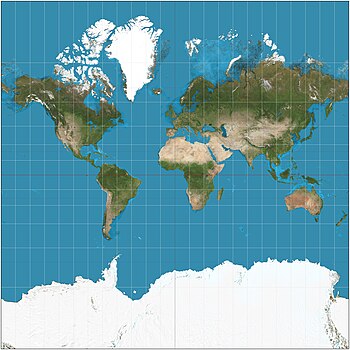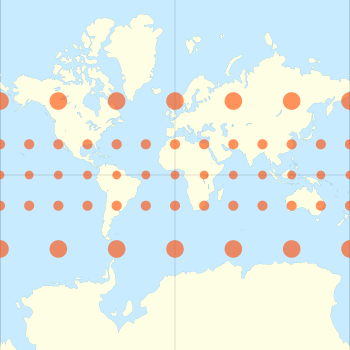
Back إسقاط مركاتور Arabic Proyeición de Mercator AST Мэркатарава праекцыя BE-X-OLD Меркаторова проекция Bulgarian মারকেটর অভিক্ষেপ Bengali/Bangla Projecció de Mercator Catalan Mercatorovo zobrazení Czech Mercatorprojektion Danish Mercator-Projektion German Μερκατορική προβολή Greek



The Mercator projection (/mərˈkeɪtər/) is a conformal cylindrical map projection presented by Flemish geographer and cartographer Gerardus Mercator in 1569. It became the standard map projection for navigation due to its ability to represent north as 'up' and south as 'down' everywhere while preserving local directions and shapes. However, as a result, the Mercator projection inflates the size of objects the further they are from the equator. In a Mercator projection, landmasses such as Greenland and Antarctica appear far larger than they actually are relative to landmasses near the equator. Despite these drawbacks, the Mercator projection is well-suited to marine navigation and internet web maps and continues to be widely used today.[1]
- ^ "Gerardus Mercator". education.nationalgeographic.org. Retrieved 2024-03-02.
© MMXXIII Rich X Search. We shall prevail. All rights reserved. Rich X Search